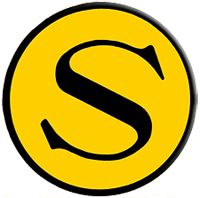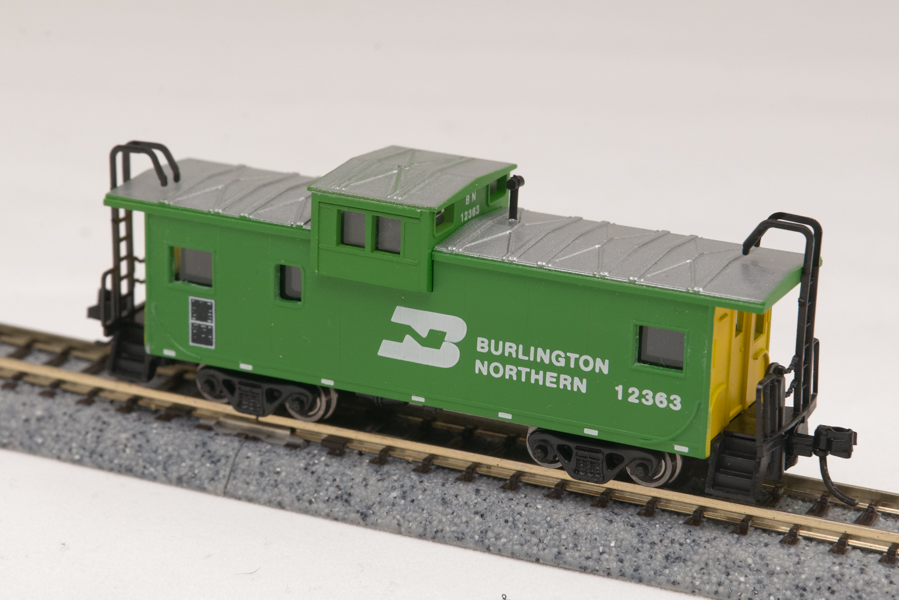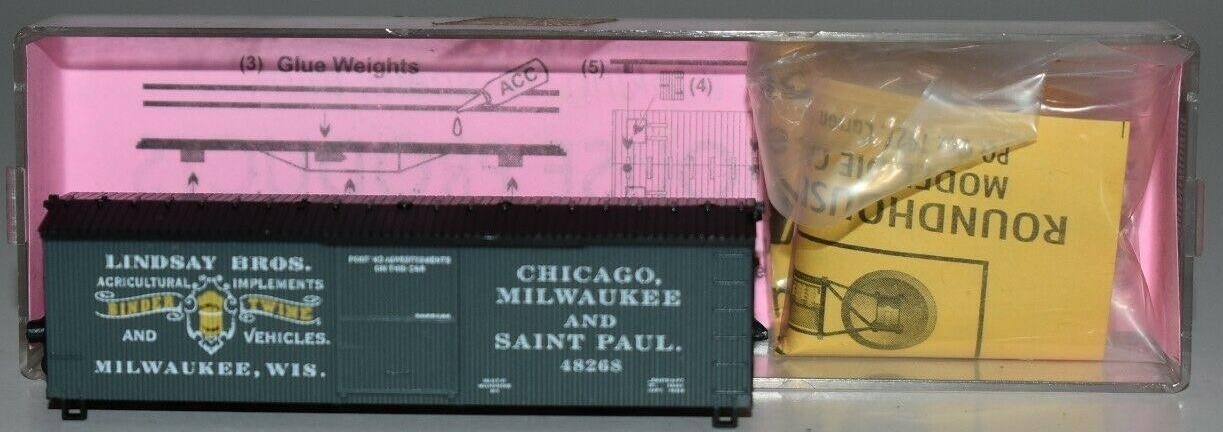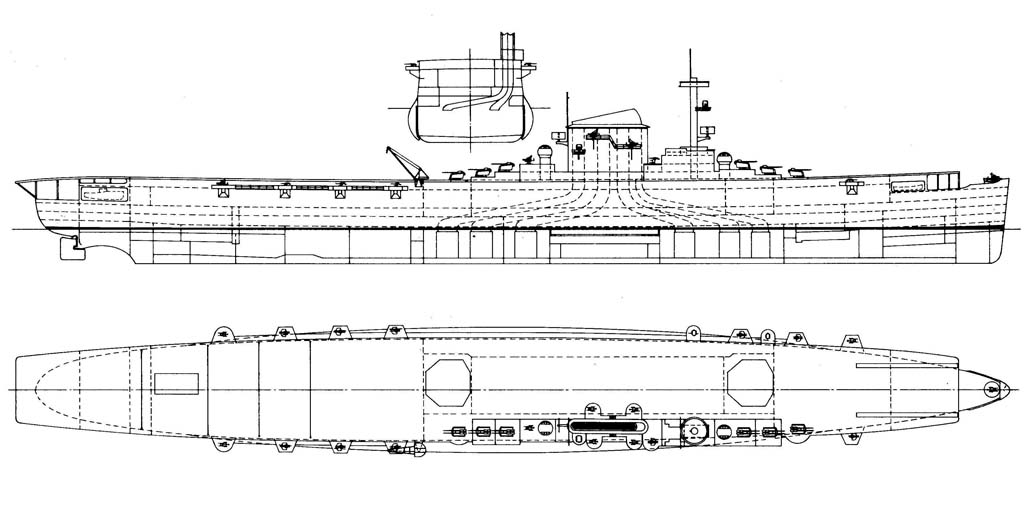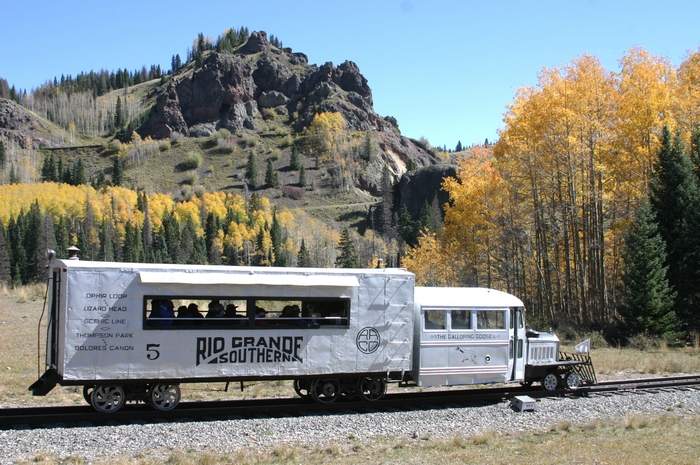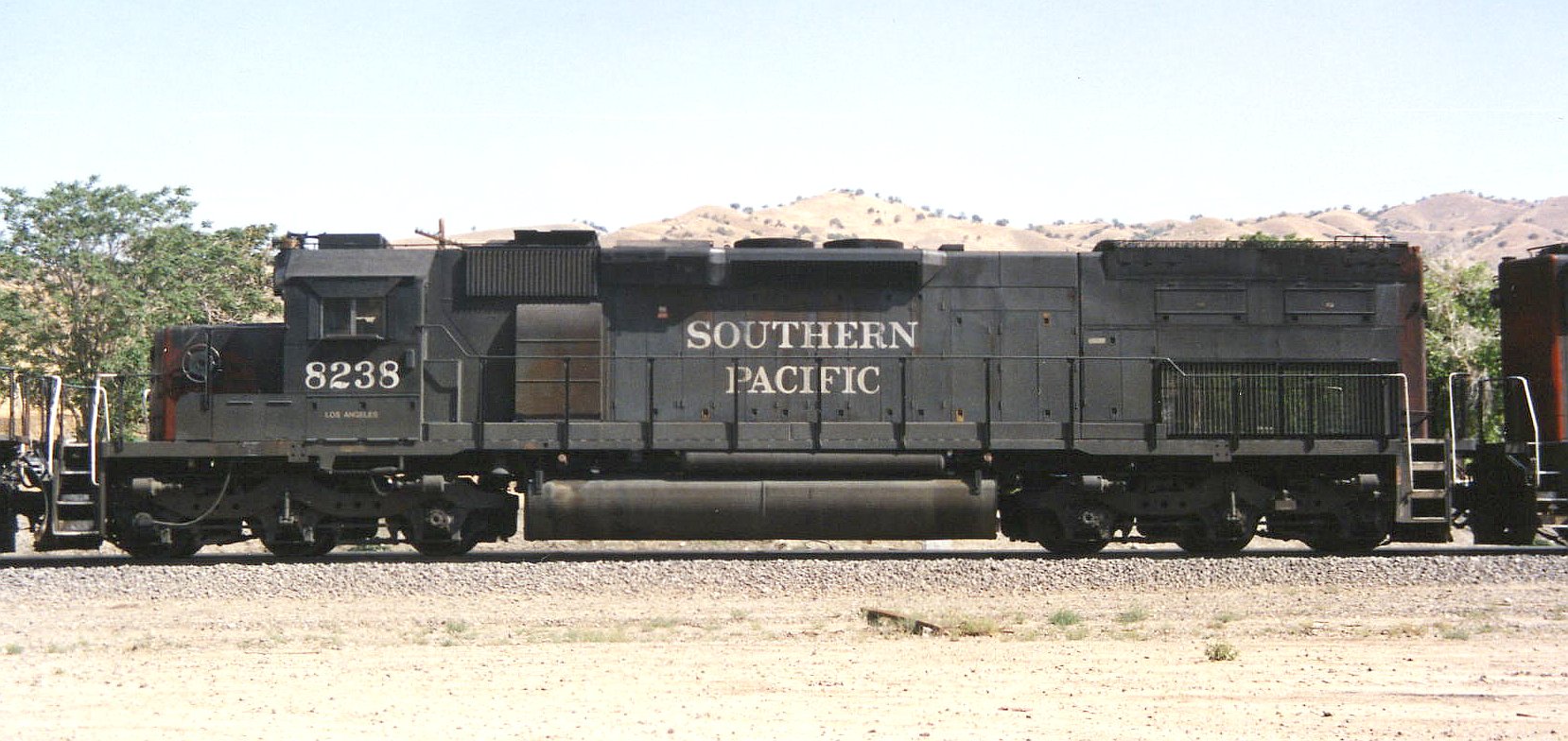Specific Item Information: These locomotives are painted black & yellow black lettering and yellow "hash" frame stripe. They are fully assembled with etched metal detail parts and operating knuckle couplers. This unit has high mounted ditch lights.
Model Information: InterMountain first introduced this model in 2003. Several additional runs have been produced since then.
The design of the chassis is very much similar to the Atlas SD50/60 mechanism. It sports all the features one normally associates with "modern" diesel models - IE, DCC-Ready / split-frame / all-metal chassis, 5-pole / skew-wound / "slow speed" motor, dual flywheels, low-friction drive, bi-directional LED lighting, all-wheel drive and pickup (no traction tires), blackened / low-profile wheels, shell-mounted magnetic knuckle couplers, all-plastic gearing, etc.
Assembly instructions from Intermountain: SD40T-2 / SD45T-2 (or on company website)
Note on this drawing that several parts are actually Atlas parts.
The design of the chassis is very much similar to the Atlas SD50/60 mechanism. It sports all the features one normally associates with "modern" diesel models - IE, DCC-Ready / split-frame / all-metal chassis, 5-pole / skew-wound / "slow speed" motor, dual flywheels, low-friction drive, bi-directional LED lighting, all-wheel drive and pickup (no traction tires), blackened / low-profile wheels, shell-mounted magnetic knuckle couplers, all-plastic gearing, etc.
Assembly instructions from Intermountain: SD40T-2 / SD45T-2 (or on company website)
Note on this drawing that several parts are actually Atlas parts.
DCC Information: From the run announced in 2015, this model is proposed factory-equipped with either a non-sound DCC decoder (models suffixed by "D") or a sound DCC decoder (models suffixed by "S"), both from ESU. The new associated design induced significant delays, and the new models are now announced to be released in 2017.
Models produced up to 2009 accept the following plug-in decoders (non-sound):
- Digitrax DN166I0: 1.5 Amp Decoder for Intermountain N scale SD40T-2 / SD45T-2.
- TCS IMD4: BEMF decoder designed to fit Intermountain N scale SD40T-2, SD45T-2, SD45-2.
- NCE N12AOe: Plug and Play, 2 function decoder for Intermountain Tunnel Motors.
Models produced up to 2009 accept the following plug-in decoders (non-sound):
- Digitrax DN166I0: 1.5 Amp Decoder for Intermountain N scale SD40T-2 / SD45T-2.
- TCS IMD4: BEMF decoder designed to fit Intermountain N scale SD40T-2, SD45T-2, SD45-2.
- NCE N12AOe: Plug and Play, 2 function decoder for Intermountain Tunnel Motors.
Prototype History: An SD40T-2 is a 6-axle diesel-electric locomotive built by General Motors Electro-Motive Division having a 16-cylinder EMD 645E3 diesel engine producing 3,000 horsepower (2,240 kW). 312 SD40T-2s were built for North American railroads between April 1974 and July 1980. This locomotive and the SD45T-2 are popularly called tunnel motors, but EMD's term is SD40-2s with "cooling system modifications" because they were designed for better engine cooling in tunnels. The difference between this locomotive and its non-tunnel motor cousin, the SD40-2, are the radiator intakes and radiator fan grills located at the rear of the locomotive. The radiator air intakes in this model were along the deck to allow more fresh, cooler air to enter and less hot exhaust fumes lingering around the tunnel's ceiling.
EMD SD45T-2 vs SD40T-2 radiator fan motor access doors
This locomotive model was purchased by the Denver and Rio Grande Western Railroad, the Southern Pacific Railroad, and its subsidiary Cotton Belt. Southern Pacific's version has a 4,400-US-gallon (16,700 L; 3,660 imp gal) fuel tank and is 70 feet 8 inches (21.54 m) long. Rio Grande's version has a smaller 4,000-US-gallon (15,100 l; 3,330 imp gal) fuel tank. After merging with Rio Grande, the Southern Pacific and later Union Pacific owned every SD40T-2.
In 2005, most of these units were owned by Union Pacific or leasing companies. By 2008, none were left in service on UP with SP or DRGW reporting marks. DRGW 5371 was the last one, retired in March 2008, and now resides at the Utah State Railroad Museum in Ogden Utah. Another SD40T-2 is preserved at the Boone & Scenic Valley Railroad in Boone, Iowa. UP still runs a few units repainted in its own livery.
Full EMD SD40T-2 data sheet on The Diesel Workshop.
Read more on Wikipedia.
Read more on American-Rails.com
This locomotive model was purchased by the Denver and Rio Grande Western Railroad, the Southern Pacific Railroad, and its subsidiary Cotton Belt. Southern Pacific's version has a 4,400-US-gallon (16,700 L; 3,660 imp gal) fuel tank and is 70 feet 8 inches (21.54 m) long. Rio Grande's version has a smaller 4,000-US-gallon (15,100 l; 3,330 imp gal) fuel tank. After merging with Rio Grande, the Southern Pacific and later Union Pacific owned every SD40T-2.
In 2005, most of these units were owned by Union Pacific or leasing companies. By 2008, none were left in service on UP with SP or DRGW reporting marks. DRGW 5371 was the last one, retired in March 2008, and now resides at the Utah State Railroad Museum in Ogden Utah. Another SD40T-2 is preserved at the Boone & Scenic Valley Railroad in Boone, Iowa. UP still runs a few units repainted in its own livery.
Full EMD SD40T-2 data sheet on The Diesel Workshop.
Read more on Wikipedia.
Read more on American-Rails.com
Road Name History: The New York, Susquehanna & Western Railway (reporting mark NYSW) (a.k.a. the Susie-Q or the Susquehanna) is a Class II American freight railway operating over 500 miles (800 km) of track in the northeastern states of New York, Pennsylvania and New Jersey. It was formed in 1881 from the merger of several smaller railroads. Passenger service in Northern New Jersey was offered until 1966. The railroad was purchased by the Delaware Otsego Corporation in 1980, and became a regional player during the 1980s in the intermodal freight transport business.
The New York, Susquehanna & Western can trace its roots back to the Hoboken, Ridgefield & Paterson Railroad, chartered in 1866 to connect industrial Paterson, New Jersey, with the ports along the Hudson Waterfront opposite New York City at Hoboken. That same year, the New York and Oswego Midland Railroad was chartered to connect the Great Lakes port at Oswego, New York, with New York City. Several competing companies sprang up in 1867, but the New Jersey Western was the most successful, constructing westward from Paterson and Hawthorne. Cornelious Wortendyke, president of the New Jersey Western Railroad (NJW), signed a lease agreement with DeWitt Clinton Littlejohn of the New York, Ontario and Western Railway (NYO&W) giving his road a through route into New Jersey. Construction on the NY&OM started in 1868 and progressed rapidly. The NJW changed its name to the New Jersey Midland Railway in 1870, and construction had stretched from Hackensack, New Jersey, all the way through to Hanford.
Currently, the NYS&W operates over 500 miles of track in three states. The network consists of three main routes, one running from Northern New Jersey to Binghamton and the other two branching north from Binghamton to serve Utica and Syracuse.
The New York, Susquehanna & Western can trace its roots back to the Hoboken, Ridgefield & Paterson Railroad, chartered in 1866 to connect industrial Paterson, New Jersey, with the ports along the Hudson Waterfront opposite New York City at Hoboken. That same year, the New York and Oswego Midland Railroad was chartered to connect the Great Lakes port at Oswego, New York, with New York City. Several competing companies sprang up in 1867, but the New Jersey Western was the most successful, constructing westward from Paterson and Hawthorne. Cornelious Wortendyke, president of the New Jersey Western Railroad (NJW), signed a lease agreement with DeWitt Clinton Littlejohn of the New York, Ontario and Western Railway (NYO&W) giving his road a through route into New Jersey. Construction on the NY&OM started in 1868 and progressed rapidly. The NJW changed its name to the New Jersey Midland Railway in 1870, and construction had stretched from Hackensack, New Jersey, all the way through to Hanford.
Currently, the NYS&W operates over 500 miles of track in three states. The network consists of three main routes, one running from Northern New Jersey to Binghamton and the other two branching north from Binghamton to serve Utica and Syracuse.
Brand/Importer Information: InterMountain was founded in 1985 by Fred Brummet. They got started in the model railroad business by producing O-Scale model kits. They got started in the N Scale business almost a decade later when in 1994 they introduced the 40-23 reefer car in kit form. Later, in 1998, they started producing RTR (Ready-to-Run) models. By the early 2000s, InterMountain phased out kit production in favor of the RTR models.
The InterMountain Railway company is located at 1224 Boston Ave in Longmont, CO. They are a manufacturer of HO, N and Z scale model trains. They have produced kits as well as RTR (Ready-To-Run) models. Their N Scale products include locomotives as well as rolling stock. Their rolling stock lineup includes Boxcars, Hoppers, Tank Cars, Reefers, Gondolas, Stock Cars and Flatcars.
Their locomotive releases have primarily been diesel units, with the one major exception being their series of AC-12 Cab Forward steam locos. Their diesel lineup includes F3's, F7's, F9's, SD40's, SD45's and FT units. They are known for quality and detail. They also release their rolling stock in larger varieties of road numbers than most of the other manufacturers.
The InterMountain Railway company is located at 1224 Boston Ave in Longmont, CO. They are a manufacturer of HO, N and Z scale model trains. They have produced kits as well as RTR (Ready-To-Run) models. Their N Scale products include locomotives as well as rolling stock. Their rolling stock lineup includes Boxcars, Hoppers, Tank Cars, Reefers, Gondolas, Stock Cars and Flatcars.
Their locomotive releases have primarily been diesel units, with the one major exception being their series of AC-12 Cab Forward steam locos. Their diesel lineup includes F3's, F7's, F9's, SD40's, SD45's and FT units. They are known for quality and detail. They also release their rolling stock in larger varieties of road numbers than most of the other manufacturers.
Item created by: Alain LM on 2016-10-30 04:28:13. Last edited by gdm on 2020-07-24 07:24:30
If you see errors or missing data in this entry, please feel free to log in and edit it. Anyone with a Gmail account can log in instantly.
If you see errors or missing data in this entry, please feel free to log in and edit it. Anyone with a Gmail account can log in instantly.




